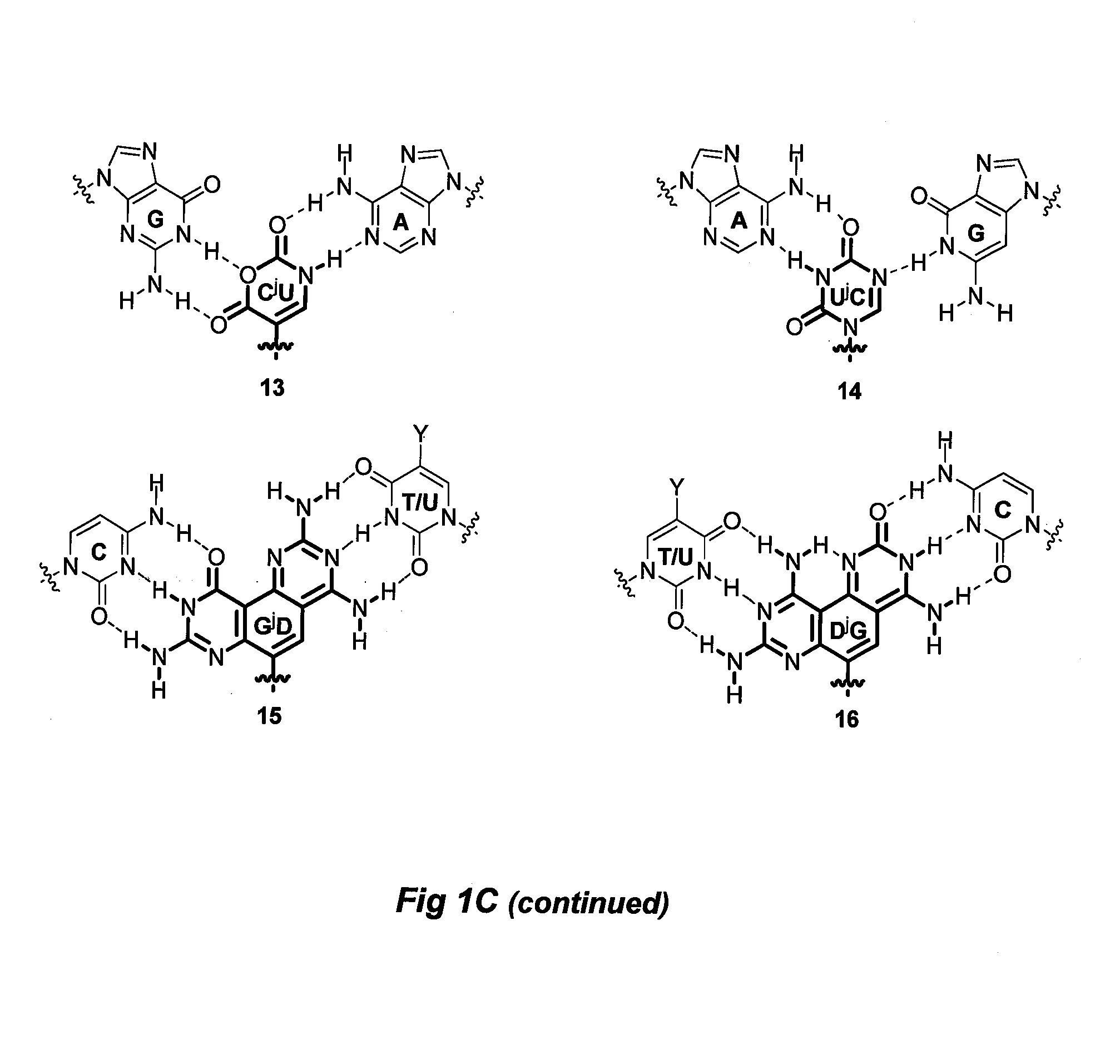Divalent nucleobase compounds and uses therefor
a technology of divalent nucleobases and compounds, applied in the field of nucleobases, can solve the problems that small-molecule drugs are not currently fulfilled, and achieve the effects of small size, improved stability, and improved stability
- Summary
- Abstract
- Description
- Claims
- Application Information
AI Technical Summary
Benefits of technology
Problems solved by technology
Method used
Image
Examples
example 1
Computer Simulation of Interactions of γPNA with DNA and RNA
[0069]DNA binding properties of γPNA include efficiencies from backbone preorganization (as defined by the stereochemistry at the γ-position, which determines the helical sense of the oligomer) and improvements in hydrogen-bonding and base-stacking capabilities. Divalent nucleobases JB 1-4, were designed to bind to the perfectly matched, and JB 5-16 were designed to bind to mismatched base-pairs in the DNA or RNA double helix. In both cases binding occurs via strand invasion, whereby one face of the divalent nucleobase forms Watson-Crick-like hydrogen-bonding interactions with natural bases on one strand of DNA or RNA double helix, while a second face forms ‘Janus’ hydrogen-bonding interactions with the complementary strand of the DNA or RNA target. As indicated above, FIG. 1 illustrates these hydrogen-bonding interactions, while comparing to Watson-Crick-like hydrogen-bonding interactions with natural bases.
[0070]In one em...
example 2
Synthesis of Divalent Nucleobases, Nucleotide Monomers and γPNA Oligomers
[0073]Examples of reactions performed to synthesis JBs 1-16 are shown in FIG. 7. Upon synthesis of these specialized bases, the corresponding monomers can be synthesized and an example synthesis scheme is described in FIG. 8. FIG. 9 illustrates the synthesis of oligomers containing the γPNA oligomers.
PUM
| Property | Measurement | Unit |
|---|---|---|
| peptide nucleic acid | aaaaa | aaaaa |
| structure | aaaaa | aaaaa |
| secondary structures | aaaaa | aaaaa |
Abstract
Description
Claims
Application Information
 Login to View More
Login to View More - R&D
- Intellectual Property
- Life Sciences
- Materials
- Tech Scout
- Unparalleled Data Quality
- Higher Quality Content
- 60% Fewer Hallucinations
Browse by: Latest US Patents, China's latest patents, Technical Efficacy Thesaurus, Application Domain, Technology Topic, Popular Technical Reports.
© 2025 PatSnap. All rights reserved.Legal|Privacy policy|Modern Slavery Act Transparency Statement|Sitemap|About US| Contact US: help@patsnap.com



